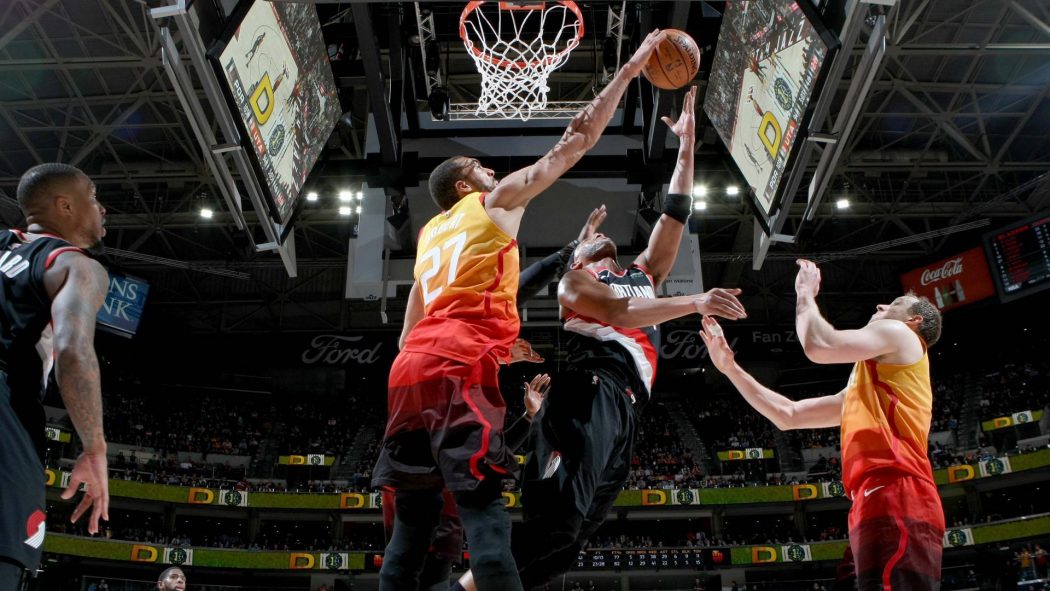Rudy Gobert, all-star center of the Utah Jazz, like the rest of us, has had an up-and-down year. Early in the calendar, as the first confirmed case of Coronavirus in the league and ultimately the one which prompted the season’s abrupt suspension of play earlier this year in March, he faced a lot of heat from Jazz and NBA fans alike for ostensibly bringing the virus into the league and carelessly spreading it. This came to a head when trade rumors for his co-star, Donovan Mitchell began to see more and more attention, as it was anonymously reported that Dovovan Mitchell had even taken exception to the way in which Gobert had spread the virus through the locker room.
All of this, in addition to a disappointing first-round series exit against the Denver Nuggets in which they lost with a 3-1 game lead, evidently put the two-time defensive player of the year’s future with the team in question as he entered his first period of supermax extension eligibility, entitling him to a potential maximum of $228 million. At the time, it was unclear whether the Jazz would offer him this type of deal even before the events of the outbreak in March, due to the center’s history of potentially concerning playoff performances in which his lack of ability to defend away from the rim was exploited by the Houston Rockets repeatedly. In the aftermath of the Denver series, some believed the Jazz may attempt to low-ball Gobert, focusing that money towards Mitchell’s extension and acquiring other role players while others thought that Gobert may have been quietly on the trading block. Mitchell’s earlier re-signing for the rookie scale max contributed to this suspicion, seemingly spelling out the team’s financial prioritization of the duo, but the Jazz’s ultimate decision to extend Gobert’s contracts confirms that the front office sees this pair as their future. They will move forward with Gobert, Mitchell, Clarkson and Bogdanovic as their core in a heavily competitive Western Conference.
Now, what does all of this say to us about the NBA? Well, sadly something people have known and suspected for a very long time has become increasingly apparent: small-market teams negotiate with an inherent disadvantage, especially when conferring with star players. Cities like Los Angeles and Miami will always have an edge over other teams when recruiting highly sought-after players who can make decisions between multiple suitors because of factors like superior location and weather, which compounds any actual organizational advantages they may have. Though the term “small-market team” is most common, it’s really more of a matter of the player’s preference for these factors, which often but does not always correlate with market size–Knicks fans will tell you this personally, sometimes being in a “big-market” can beget the same signing success as any other. This makes it difficult for even a remarkably competent team like, for example, the Oklahoma City Thunder, to retain talented players like Kevin Durant once they get the opportunity to make that decision to leave in free agency. Small markets often don’t enter into negotiations with players, so much as they’re being given an ultimatum.
Small-market teams negotiate with an inherent disadvantage, especially when conferring with star players
The truth is, even Utah Jazz fans will tell you that a core group of Donovan Mitchell and Rudy Gobert, even with an excellent cast of role players, is unlikely to lead them to a championship. For the Jazz front office however, this isn’t the be-all and end-all goal necessarily, at least not enough to risk losing a talent like Gobert in order to riskily pursue somebody better. While Gobert may have stopped around 20 million dollars short of the supermax, his deal is easily the most any big man has ever been able to earn, surpassing NBA Champion Anthony Davis’ extension with the Los Angeles Lakers.
We saw many examples of this general trend during free agency this year with players at many different skill-levels receiving contracts from small-markets. Gordon Hayward was perhaps the biggest benefactor of this phenomenon, bringing in a 4 year $120m contract to play for the Charlotte Hornets. For a team like the Hornets that has consistently struggled to be relevant in the playoff hunt in the weaker Eastern conference, getting a high-level piece like Hayward, even though he isn’t a star and comes with some nagging injury concerns, is a valuable opportunity for which the organization has an inelastic demand. When pursuing talent at that level, the organization has no choice but to overpay to meet the demands of the free agent. This can even take place with players that aren’t at the star-powered level of a Gordon Hayward. Take Davis Bertans, for example, who accepted a massive 5-year, $80 M contract to return to the Washington Wizards, primarily in a role as a spot-up shooting big, that some would consider above his pay-grade. While these moves often make perfect sense considering the scarcity at play for these teams, these signings often wind up heavily detrimental to the team’s long-term ability to build a competitive roster at the highest-level in the long-run. Stars and high-level role players often wind up either underperforming these deals or aging out of effectiveness during them, burdening the team that signed them with a huge contract to either move, usually at a cost of other assets, or obstruct their cap sheet, as is or was the case with players like John Wall, Russell Westbrook, Nic Batum, Paul Millsap, Andrew Wiggins, Kevin Love, and many other who were all signed by small markets.
Some teams have done what they can to avoid this trap altogether… generally avoiding making big signings of out-of-club talent and choosing to focus on player development and savvy trading
Some small market teams have done what they can to avoid this trap altogether, with teams like the Indiana Pacers and Toronto Raptors generally avoiding making big signings of out-of-club talent and choosing to focus on player development and savvy trading. If done well, this can clearly be a successful formula, as both of these teams have been perennial playoff teams with Toronto even winning a championship with a team constructed primarily through this method, but it’s not one many other small-markets seem eager to emulate.
Despite the difficulty of their situation, there may be more hope now than ever for small-market teams. Two-time reigning MVP and Defensive Player of the Year Giannis Antetokounmpo’s recent supermax, $226 M deal to return to his Milwaukee Bucks suggests that while these teams will always need to “back up the Brinks Truck” in order to retain and acquire talent, contributing factors like loyalty and commitment have not fallen by the wayside entirely. In addition, a majority of the players who made the 2020 All-star game and All-NBA teams are under contract for at least another 3 seasons or will enter restricted free agency during that period, many locked up with their draft teams. For small markets, and NBA teams in general, it will be imperative to navigate the evolving landscape of teams and understand the timeline they have, while making good decisions when it comes time to choose who puts pen to paper.








